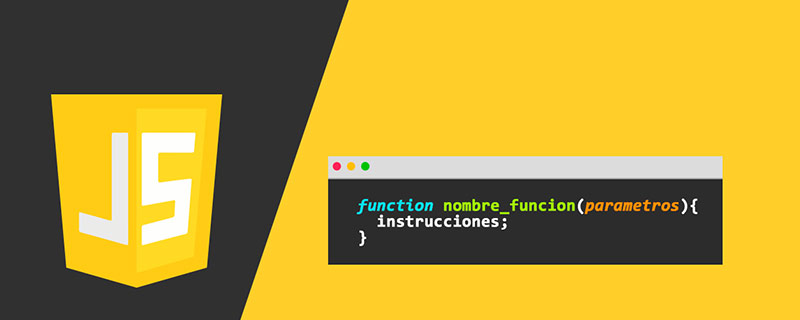The content of this article is about the static resource server implementation of Node.js (with code). It has certain reference value. Friends in need can refer to it. I hope it will be helpful to you.
This article introduces a simple static resource server example project, hoping to help Node.js beginners. The project involves http, fs, url, path, zlib, process, child_process and other modules, covering a large number of commonly used APIs; it also includes caching strategy selection based on the http protocol, gzip compression optimization, etc.; eventually we will publish it on npm and make it A small tool that can be installed and used globally. Although the sparrow is small, it has all the internal organs. Doesn’t it make you a little excited when you think about it? Without further ado, let’s get down to speed.
The source code address in the article is in the final appendix.
You can experience the project effect first:
Installation: npm i -g here11
Enter the command at any folder address: here
step1 Create a new project
Because we want to publish to npm, so we first follow international practice, npm init, let’s go! You can press Enter all the way on the command line, and some configurations will be detailed in the final publishing steps.
The directory structure is as follows:

The bin folder stores our execution code, and web is used as a test folder with some web pages in it.
step2 code
step2.1 Prototype
Static resource server, in layman’s terms, we enter something like “http://domain name/test/” in the browser address bar index.html", the server finds index.html from the corresponding folder in the root directory, reads the file content and returns it to the browser, and the browser renders it to the user.
const http = require("http");
const url = require("url");
const fs = require("fs");
const path = require("path");
const item = (name, parentPath) => {
let path = parentPath = `${parentPath}/${name}`.slice(1);
return `<p><a>${name}</a></p>`;
}
const list = (arr, parentPath) => {
return arr.map(name => item(name, parentPath)).join("");
}
const server = http.createServer((req, res) => {
let _path = url.parse(req.url).pathname;//去掉search
let parentPath = _path;
_path = path.join(__dirname, _path);
try {
//拿到路径所对应的文件描述对象
let stats = fs.statSync(_path);
if (stats.isFile()) {
//是文件,返回文件内容
let file = fs.readFileSync(_path);
res.end(file);
} else if (stats.isDirectory()) {
//是目录,返回目录列表,让用户可以继续点击
let dirArray = fs.readdirSync(_path);
res.end(list(dirArray, parentPath));
} else {
res.end();
}
} catch (err) {
res.writeHead(404, "Not Found");
res.end();
}
});
const port = 2234;
const hostname = "127.0.0.1";
server.listen(port, hostname, () => {
console.log(`server is running on http://${hostname}:${port}`);
});
The above code is our core code. The core functions have been implemented. If you run it locally, you can see that the file directory has been returned. Click on the file name to browse the corresponding web pages, pictures, and texts.
step2.2 Optimization
The function has been implemented, but we can optimize it in some aspects to improve practicality and learn more APIs (pretend skills).
1. stream
Our current operation of reading files and returning them to the browser is to read them out once and return them all at once through readFile. This can certainly achieve the function, but we have a better solution. Method - Use stream to perform IO operations. Stream is not a concept unique to node.js, but the most basic form of operation of the operating system, so theoretically, any server-side language implements the stream API.
Why is using stream a better way? Because reading and operating large files at one time consumes memory and the network, especially when the number of user visits is relatively large; with the help of streams, data can flow and be operated bit by bit, thereby improving performance. The code modification is as follows:
if (stats.isFile()) {
//是文件,返回文件内容
//在createServer时传入的回调函数被添加到了"request"事件上,回调函数的两个形参req和res
//分别为http.IncomingMessage对象和http.ServerResponse对象
//并且它们都实现了流接口
let readStream = fs.createReadStream(_path);
readStream.pipe(res);
}
The coding implementation is very simple. When we need to return the file content, we create a readable stream and direct it to the res object.
2. gzip compression
The performance (user access experience) improvement brought by gzip compression is very obvious, especially in the current era of popular spa applications, turning on gzip compression can greatly reduce the The size of file resources such as js and css improves user access speed. As a static resource server, of course we have to add this function.
There is a zlib module in node, which provides a lot of compression-related APIs. We use it to implement:
const zlib = require("zlib");
if (stats.isFile()) {
//是文件,返回文件内容
res.setHeader("content-encoding", "gzip");
const gzip = zlib.createGzip();
let readStream = fs.createReadStream(_path);
readStream.pipe(gzip).pipe(res);
}
With the experience of using stream, let’s look at this code again It will be easier to understand then. Direct the file stream to the gzip object first, and then to the res object. In addition, you need to pay attention to one thing when using gzip compression: you need to set the content-encoding in the response header to gzip. Otherwise, the browser will display a bunch of garbled characters.
3. http cache
Cache is something that people love and hate. If used well, it can improve the user experience and reduce server pressure; if used poorly, you may face various problems. All kinds of weird questions. Generally speaking, browser http cache is divided into strong cache (non-verification cache) and negotiation cache (verification cache).
What is strong caching? Strong caching is controlled by two header fields, cache-control and expires. Nowadays, cache-control is generally used. For example, we set the response header of cache-control: max-age=31536000, which tells the browser that this resource has a one-year cache period. Within one year, there is no need to send a request to the server and the resource is read directly from the cache.
The negotiated cache uses if-modified-since/last-modified, if-none-match/etag and other header fields, combined with strong cache, if the strong cache does not hit (or tells the browser no-cache ), send a request to the server, confirm the validity of the resource, and decide to read from the cache or return a new resource.
With the above concepts, we can formulate our caching strategy:
if (stats.isFile()) {
//是文件,返回文件内容
//增加判断文件是否有改动,没有改动返回304的逻辑
//从请求头获取modified时间
let IfModifiedSince = req.headers["if-modified-since"];
//获取文件的修改日期——时间戳格式
let mtime = stats.mtime;
//如果服务器上的文件修改时间小于等于请求头携带的修改时间,则认定文件没有变化
if (IfModifiedSince && mtime <p>这样一套缓存策略在现代前端项目体系下还是比较合适的,尤其是对于spa应用来讲。我们希望index.html能够保证每次向服务器验证是否有更新,而其余的文件统一本地缓存一个月(自己定);通过webpack打包或其他工程化方式构建之后,js、css内容如果发生变化,文件名相应更新,index.html插入的manifest(或script链接、link链接等)清单会更新,保证用户能够实时得到最新的资源。</p><p>当然,缓存之路千万条,适合业务才重要,大家可以灵活制定。</p><h4 id="命令行参数">4. 命令行参数</h4><p>作为一个在命令行执行的工具,怎么能不象征性的支持几个参数呢?</p><pre class="brush:php;toolbar:false">const config = {
//从命令行中获取端口号,如果未设置采用默认
port: process.argv[2] || 2234,
hostname: "127.0.0.1"
}
server.listen(config.port, config.hostname, () => {
console.log(`server is running on http://${config.hostname}:${config.port}`);
});这里就简单的举个栗子啦,大家可以自由发挥!
5. 自动打开浏览器
虽然没太大卵用,但还是要加。我就是要让你们知道,我加完之后什么样,你们就是什么样 :-( duang~
const exec = require("child_process").exec;
server.listen(config.port, config.hostname, () => {
console.log(`server is running on http://${config.hostname}:${config.port}`);
exec(`open http://${config.hostname}:${config.port}`);
});6. process.cwd()
用process.cwd()代替__dirname。
我们最终要做成一个全局并且可以在任意目录下调用的命令,所以拼接path的代码修改如下:
//__dirname是当前文件的目录地址,process.cwd()返回的是脚本执行的路径 _path = path.join(process.cwd(), _path);
step3 发布
基本上我们的代码都写完了,可以考虑发布了!(不发布到npm上何以显示逼格?)
step3.1 package.json
得到一个配置类似下面所示的json文件:
{
"name": "here11",
"version": "0.0.13",
"private": false,
"description": "a node static assets server",
"bin": {
"here": "./bin/index.js"
},
"repository": {
"type": "git",
"url": "https://github.com/gww666/here.git"
},
"scripts": {
"test": "node bin/index.js"
},
"keywords": [
"node"
],
"author": "gw666",
"license": "ISC"
}其中bin和private较为重要,其余的按照自己的项目情况填写。
bin这个配置代表的是npm i -g xxx之后,我们运行here命令所执行的文件,“here”这个名字可以随意起。
step3.2 声明脚本执行类型
在index.js文件的开头加上:#!/usr/bin/env node
否则linux上运行会报错。
step3.3 注册npm账号
勉强贴一手命令,还不清楚自行百度:
没有账号的先添加一个,执行:
npm adduser
然后依次填入
Username: your name
Password: your password
Email: yourmail
npm会给你发一封验证邮件,记得点一下,不然会发布失败。
执行登录命令:
npm login
执行发布命令:
npm publish
发布的时候记得把项目名字、版本号、作者、仓库啥的改一下,别填成我的。
还有readme文件写一下,好歹告诉别人咋用,基本上和文首所说的用法是一样的。
好了,齐活。
step3.4
还等啥啊,赶快把npm i -g xxx 这行命令发给你的小伙伴啊。什么?你没有小伙伴?告辞!
附
本文项目源码地址:https://github.com/gww666/here
The above is the detailed content of Node.js static resource server implementation (with code). For more information, please follow other related articles on the PHP Chinese website!
 Vercel是什么?怎么部署Node服务?May 07, 2022 pm 09:34 PM
Vercel是什么?怎么部署Node服务?May 07, 2022 pm 09:34 PMVercel是什么?本篇文章带大家了解一下Vercel,并介绍一下在Vercel中部署 Node 服务的方法,希望对大家有所帮助!
 node.js gm是什么Jul 12, 2022 pm 06:28 PM
node.js gm是什么Jul 12, 2022 pm 06:28 PMgm是基于node.js的图片处理插件,它封装了图片处理工具GraphicsMagick(GM)和ImageMagick(IM),可使用spawn的方式调用。gm插件不是node默认安装的,需执行“npm install gm -S”进行安装才可使用。
 怎么使用pkg将Node.js项目打包为可执行文件?Jul 26, 2022 pm 07:33 PM
怎么使用pkg将Node.js项目打包为可执行文件?Jul 26, 2022 pm 07:33 PM如何用pkg打包nodejs可执行文件?下面本篇文章给大家介绍一下使用pkg将Node.js项目打包为可执行文件的方法,希望对大家有所帮助!
 一文解析package.json和package-lock.jsonSep 01, 2022 pm 08:02 PM
一文解析package.json和package-lock.jsonSep 01, 2022 pm 08:02 PM本篇文章带大家详解package.json和package-lock.json文件,希望对大家有所帮助!
 分享一个Nodejs web框架:FastifyAug 04, 2022 pm 09:23 PM
分享一个Nodejs web框架:FastifyAug 04, 2022 pm 09:23 PM本篇文章给大家分享一个Nodejs web框架:Fastify,简单介绍一下Fastify支持的特性、Fastify支持的插件以及Fastify的使用方法,希望对大家有所帮助!
 node爬取数据实例:聊聊怎么抓取小说章节May 02, 2022 am 10:00 AM
node爬取数据实例:聊聊怎么抓取小说章节May 02, 2022 am 10:00 AMnode怎么爬取数据?下面本篇文章给大家分享一个node爬虫实例,聊聊利用node抓取小说章节的方法,希望对大家有所帮助!
 手把手带你使用Node.js和adb开发一个手机备份小工具Apr 14, 2022 pm 09:06 PM
手把手带你使用Node.js和adb开发一个手机备份小工具Apr 14, 2022 pm 09:06 PM本篇文章给大家分享一个Node实战,介绍一下使用Node.js和adb怎么开发一个手机备份小工具,希望对大家有所帮助!
 图文详解node.js如何构建web服务器Aug 08, 2022 am 10:27 AM
图文详解node.js如何构建web服务器Aug 08, 2022 am 10:27 AM先介绍node.js的安装,再介绍使用node.js构建一个简单的web服务器,最后通过一个简单的示例,演示网页与服务器之间的数据交互的实现。


Hot AI Tools

Undresser.AI Undress
AI-powered app for creating realistic nude photos

AI Clothes Remover
Online AI tool for removing clothes from photos.

Undress AI Tool
Undress images for free

Clothoff.io
AI clothes remover

AI Hentai Generator
Generate AI Hentai for free.

Hot Article

Hot Tools

SAP NetWeaver Server Adapter for Eclipse
Integrate Eclipse with SAP NetWeaver application server.

EditPlus Chinese cracked version
Small size, syntax highlighting, does not support code prompt function

Dreamweaver Mac version
Visual web development tools

Notepad++7.3.1
Easy-to-use and free code editor

VSCode Windows 64-bit Download
A free and powerful IDE editor launched by Microsoft







